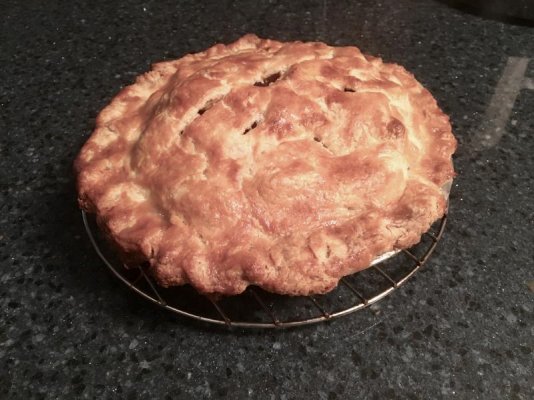Andy M.
Certified Pretend Chef
I have always used glass pie plates (primarily because SO came with glass pie plates), both regular and deep dish. They generally turn out great pies.
My one issue with glass is that, for some pies, the bottom crust doesn't cook as well as I'd like.
I have been wondering about metal pie plates. They would heat up faster and should produce a better cooked bottom crust.
So my question is, what are the pros and cons of metal pie plates over glass or ceramic?
If I switch to metal, am in just facing a different set of problems? Trading a headache for an upset stomach?
My one issue with glass is that, for some pies, the bottom crust doesn't cook as well as I'd like.
I have been wondering about metal pie plates. They would heat up faster and should produce a better cooked bottom crust.
So my question is, what are the pros and cons of metal pie plates over glass or ceramic?
If I switch to metal, am in just facing a different set of problems? Trading a headache for an upset stomach?

